Gallery
- Bukovina within Austria-Hungary
- Flag of Bukovina
- Division of Bukovina (orange) as claimed by the West Ukrainian People's Republic (black interrupted line)
- Ethnic map of Bukovina (purple = Romanians, green = Ukrainians)
- Iancu Flondor
The union of Bukovina with Romania was declared in 28 November 1918, being officially recognized by the international community in 1919 and 1920.
Since 2015, Bukovina Day is celebrated in Romania every 28 November to commemorate the union of the region with Romania. [11]

Bukovina is a historical region, variously described as part of either Central or Eastern Europe. The region is located on the northern slopes of the central Eastern Carpathians and the adjoining plains, today divided between Romania and Ukraine.

The term Greater Romania usually refers to the borders of the Kingdom of Romania in the interwar period, achieved after the Great Union. It also refers to a pan-nationalist idea.

The Duchy of Bukovina was a constituent land of the Austrian Empire from 1849 and a Cisleithanian crown land of Austria-Hungary from 1867 until 1918.

The historical regions of Romania are located in Central, Southeastern, and Eastern Europe. Romania came into being through the unification of two principalities, Wallachia and Moldavia in 1862. The new unitary state extended over further regions at various times during the late 19th and 20th centuries, including Dobruja in 1878, and Transylvania in 1918.

Chernivtsi National University is a public university in the City of Chernivtsi in Western Ukraine. One of the leading Ukrainian institutions for higher education, it was founded in 1875 as the Franz-Josephs-Universität Czernowitz when Chernivtsi (Czernowitz) was the capital of the Duchy of Bukovina, a Cisleithanian crown land of Austria-Hungary. Today the university is based at the Residence of Bukovinian and Dalmatian Metropolitans building complex, a UNESCO World Heritage Site since 2011.
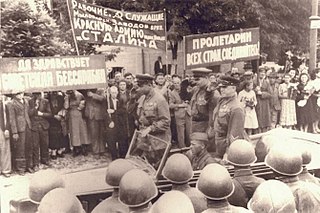
The Soviet invasion and occupation of Bessarabia and Northern Bukovina took place from June 28 to July 3, 1940, as a result of an ultimatum by the Soviet Union to Romania on June 26, 1940, that threatened the use of force. Bessarabia had been part of the Kingdom of Romania since the time of the Russian Civil War and Bukovina since the dissolution of Austria-Hungary, and Hertsa was a district of the Romanian Old Kingdom. Those regions, with a total area of 50,762 km2 (19,599 sq mi) and a population of 3,776,309 inhabitants, were incorporated into the Soviet Union. On October 26, 1940, six Romanian islands on the Chilia branch of the Danube, with an area of 23.75 km2 (9.17 sq mi), were also occupied by the Soviet Army.

Iancu Flondor was a Romanian politician who advocated Bukovina's union with the Kingdom of Romania.
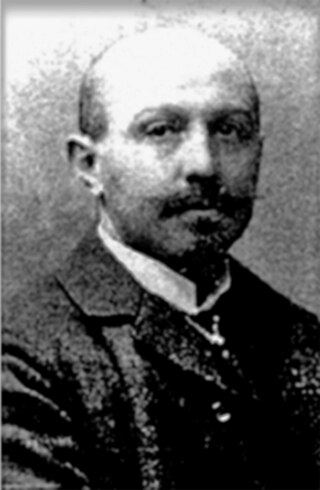
Aurel Onciul was a Romanian pro-Austrian political leader in the Austrian Bukovina, prior to its union with the Kingdom of Romania.
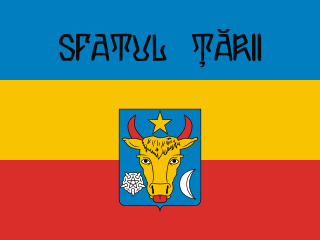
Sfatul Țării was a council that united political, public, cultural, and professional organizations in the greater part of the territory of the Governorate of Bessarabia in the disintegrating Russian Empire, which was transformed into a Legislative body and proclaimed the Moldavian Democratic Republic as part of the Russian Federative Republic in December 1917, and then union with Romania in April [O.S. March] 1918.

The union of Transylvania with Romania was declared on 1 December [O.S. 18 November] 1918 by the assembly of the delegates of ethnic Romanians held in Alba Iulia. The Great Union Day, celebrated on 1 December, is a national holiday in Romania that celebrates this event. The holiday was established after the Romanian Revolution, and celebrates the unification not only of Transylvania, but also of Bessarabia and Bukovina and parts of Banat, Crișana and Maramureș with the Romanian Kingdom. Bessarabia and Bukovina had joined with the Kingdom of Romania earlier in 1918.

The Hungarian–Romanian War was fought between Hungary and Romania from 13 November 1918 to 3 August 1919. The conflict had a complex background, with often contradictory motivations for the parties involved.

Benno or Beno Straucher was a Bukovina-born Austro-Hungarian lawyer, politician and Jewish community representative, who spent the final part of his career in Romania. A Jewish nationalist influenced by classical liberalism and Zionism, he first held political offices in Czernowitz city. After 1897, he was one of the noted Jewish representatives in the Austrian Parliament's upper chamber (Abgeordnetenhaus). Straucher, who was instrumental in creating the reformist Progressive Peasants' Fellowship, maintained his Abgeordnetenhaus seat throughout the remainder of Austria-Hungary's existence. From 1906, he led the Jewish National People's Party locally and helped establish the pan-Austrian Jewish National Party. He vied for political direction over the Bukovina Jews with several other groups, most notably the Zionist People's Council Party of Mayer Ebner, who became his personal rival.
The Democratic Union Party was a political group in Romania, one of the political forces which claimed to represent the ethnic Romanian community of Bukovina province. The PDU was active in the wake of World War I, between 1919 and 1923, having for its leader the historian and nationalist militant Ion Nistor. It was formed by Nistor and other activists who wrote for the regional periodical Glasul Bucovinei, and, as a consequence, the party members were commonly referred to as Glasiști ("Glas-ists").

Count Georg Wassilko von Serecki, was an Austro-Hungarian-born ethnic Romanian statesman, Landeshauptmann of the Duchy of Bucovina and hereditary member of the Herrenhaus, the Upper House of the Imperial Council of Austria.

Constantin Ritter von Isopescu-Grecul was an Austro-Hungarian-born Romanian jurist, politician, and journalist. He represented the region of Bukovina and a Romanian constituency in the Austrian House of Deputies continuously from 1907, participating in the political events of World War I. He was foremost known as a legal reformer and a political moderate, who objected to radical forms of Romanian nationalism and mainly sought to obtain a special status for the Romanians within a reformed Austria. His loyalism was rewarded by the Austrian authorities and antagonized the Romanian National People's Party, but Isopescu-Grecul also took distance from the pro-Austrian line advocated by Aurel Onciul. In 1908, Isopescu-Grecul joined Nicu Flondor and Teofil Simionovici in creating an Independent Party, which espoused a moderate program. He later rallied behind Iancu Flondor, embracing his conservative approach to national issues.
George Popovici was an Austro-Hungarian and Romanian agrarian politician, jurist and poet. He took to politics as a youth, participating in the nationalist movement as a member of Societatea Academică Junimea and Concordia Society. He won a seat in the Austrian House of Deputies in 1897, and, during his mandate, co-founded the Romanian National People's Party, which he also represented in the Diet of Bukovina. Popovici and Iancu Flondor led the party's autonomist wing, which rejected compromise with the Austrian administration and demanded national rights for the Romanian Bukovinians.

The Democratic Peasants' Party, also known as Democratic Party, Peasants' Party, National Democratic Party or Unirea Society, was a provincial party in Bukovina, Austria-Hungary, one of several groups claiming to represent the ethnic Romanians. It had a national liberal and left-wing populist agenda, and was mainly supported by "the peasants, the village teachers, and some of the intellectuals." Its leader was Aurel Onciul, seconded by Florea Lupu, both of whom were adversaries of the conservative and elitist Romanian National People's Party (PNPR). Rejecting sectarianism, the PȚD combined Austrian and Romanian nationalism, as Onciul argued that Romanian aspirations could only be fulfilled inside the multi-ethnic empire. For this reason, and for its role in dividing the Romanian vote, the party was often accused of double-dealing.
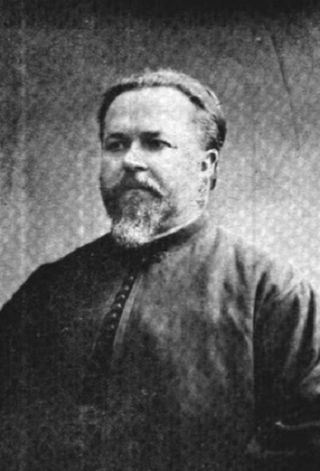
Kassian Dmitrievich Bogatyrets, or Kasyan Dmytrovych Bohatyrets, was an Eastern Orthodox priest, church historian, and Rusyn community leader in Bukovina. Born a national of Austria-Hungary, he studied theology and history, and served the parish of Sadhora. He drew the suspicion of Austrian authorities attention with his open support for Russophile politics, and was persecuted after visiting the Russian Empire in 1908. He was arrested during the first days of World War I and deported to Sankt Marien, then tried for sedition in Vienna. He was scheduled to be executed by hanging in early 1917, but was freed by a general amnesty shortly before the Austrian monarchy crumbled.

The territorial evolution of Romania includes all the changes in the country's borders from its formation to the present day. The precedents of Romania as an independent state can be traced back to the 14th century, when the principalities of Moldavia and Wallachia were founded. Wallachia during its history lost several portions of its territory, either to the Ottomans or the Habsburgs. However, this land would be later essentially recovered in its entirety. Moldavia, on the other hand, suffered great territorial losses. In 1774, the Habsburgs invaded Bukovina and annexed it one year later, and in 1812, the Russian Empire took control of Bessarabia. Both territories were later exposed to powerful colonization policies. The principalities declared unification in 1859 as the Principality of Romania. This new state sought independence from the Ottoman Empire's vassalage, and in 1878, it fought a war against it alongside Russia. However, the latter would annex Southern Bessarabia, which was recovered decades before. Romania received Northern Dobruja as compensation, and would wage a war for the southern part against Bulgaria in 1913.
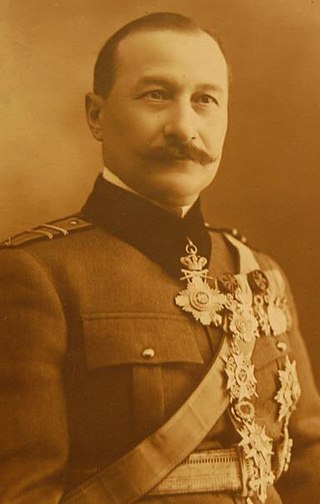
Iacob Zadik was a Romanian artillery and infantry commander, who rose to the rank of divisional general. An assimilated ethnic Armenian, he prepared for a career in the Romanian Land Forces beginning at age nine. This led him to complete military training at several schools, including the Higher War School, where he graduated in 1898. Involved in repressing the 1907 Peasants' Revolt, he fist saw field action during the Second Balkan War (1913). He spent the early years of World War I in France, appointed to the staff of Joseph Joffre, but returned in time to participate in the Romanian offensive of 1916. As one of the leaders of the First Army, Zadik then took part in the defense of Moldavia, specifically the battles of Mărășești and First Oituz. During the armistice period of early 1918, he took leadership of the 8th Infantry Division in Botoșani.